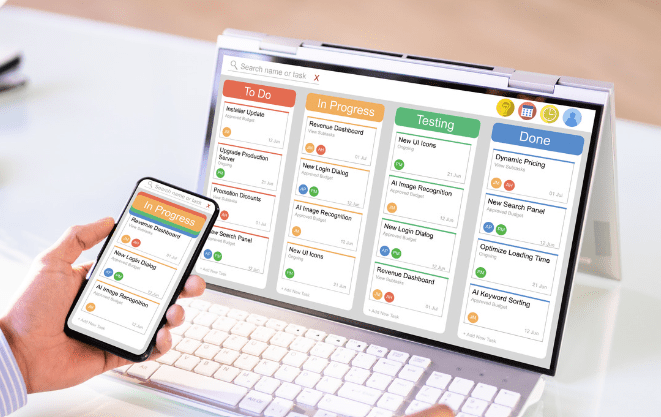Leadership and Communication in Project Management

Introduction
Project management is a complex endeavor that requires strong leadership and effective communication to ensure successful outcomes. Leadership provides guidance, motivation, and direction, while communication facilitates collaboration, clarity, and stakeholder engagement. In this article, we will explore the critical importance of leadership and communication in project management and examine how they align to drive project success.
The Essence of Leadership in Project Management
- Vision and Direction: Effective leadership establishes a clear vision for the project and communicates it to the team. It sets the overall direction, defines project goals, and aligns them with the organization’s strategic objectives. A well-defined vision inspires and motivates the team, providing them with a sense of purpose and direction.
- Stakeholder Management: Leadership involves managing diverse stakeholders throughout the project lifecycle. A skilled leader identifies key stakeholders, understands their expectations, and proactively communicates with them. By building strong relationships and keeping stakeholders informed, a leader ensures their engagement, support, and buy-in.
- Team Empowerment: A strong leader empowers the project team by providing guidance, resources, and a supportive environment. They delegate tasks, foster collaboration, and encourage team members to contribute their unique skills and expertise. By nurturing a sense of ownership and trust, a leader enables the team to perform at their best.
- Conflict Resolution: Leadership plays a crucial role in resolving conflicts and managing disagreements within the project team. A leader encourages open communication, actively listens to concerns, and facilitates constructive discussions. By addressing conflicts in a timely and impartial manner, a leader maintains a harmonious working environment and keeps the project on track.
The Power of Effective Communication in Project Management
- Clarity and Alignment: Effective communication ensures that project objectives, expectations, and deliverables are clearly understood by all stakeholders. It facilitates alignment among team members and stakeholders, reducing the risk of misunderstandings and misinterpretations. Clear communication sets a foundation for collaboration and keeps everyone focused on common goals.
- Stakeholder Engagement: Communication acts as a bridge between the project team and stakeholders. Regular and transparent communication with stakeholders fosters trust, manages expectations, and keeps them informed about project progress. It enables stakeholders to provide feedback, make informed decisions, and actively participate in the project’s success.
- Risk Mitigation: Communication plays a pivotal role in identifying and mitigating project risks. Team members must be encouraged to openly share any issues, challenges, or risks they encounter. Transparent communication channels facilitate early identification of potential roadblocks, allowing the team to devise effective mitigation strategies and minimize project disruptions.
- Collaboration and Coordination: Effective communication promotes collaboration and coordination among team members. It ensures that everyone has access to relevant information, updates, and decisions. Regular team meetings, status reports, and project documentation serve as communication tools that keep everyone aligned, synchronized, and aware of each other’s progress.
Alignment of Leadership and Communication in Project Management
- Lead by Example: Effective leaders understand the importance of communication and demonstrate it through their actions. They communicate openly, honestly, and transparently, fostering a culture of trust and open dialogue within the project team. By modeling effective communication practices, leaders inspire team members to do the same.
- Active Listening: Leaders actively listen to team members and stakeholders, seeking to understand their perspectives, concerns, and ideas. This empathetic approach enhances communication and encourages collaboration. When leaders genuinely listen, they create an environment where everyone’s voice is valued, leading to improved problem-solving and decision-making.
- Clear Direction: Effective communication from leaders ensures that project goals, objectives, and expectations are communicated clearly to the team. This clarity helps team members understand their roles and responsibilities, align their efforts, and work towards achieving project success. Clear direction enables the team to make informed decisions and take appropriate actions.
- Feedback and Recognition: Leaders provide timely and constructive feedback to team members, acknowledging their contributions and providing guidance for improvement. Regular feedback sessions foster open communication, encourage growth, and boost team morale. Recognizing and celebrating milestones and achievements further enhances communication and reinforces a positive team dynamic.
Conclusion
Leadership and communication are inseparable pillars of successful project management. Strong leadership provides guidance, vision, and empowerment, while effective communication facilitates clarity, engagement, and collaboration. When leadership and communication are aligned, project teams can overcome challenges, adapt to change, and achieve project objectives with efficiency and excellence. Recognizing the critical role of leadership and communication and nurturing these skills in project management can lead to successful project outcomes and the development of high-performing teams.






